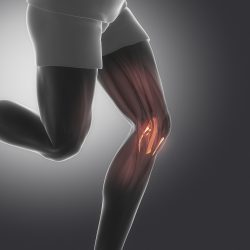Longer Life from Lifting Weights
 A new study has a great new message…you can help prolong your life by increasing the power of your muscles. The study has shown for the first time that people tend to live longer lives when they have more muscle power.
A new study has a great new message…you can help prolong your life by increasing the power of your muscles. The study has shown for the first time that people tend to live longer lives when they have more muscle power.
Power is reliant on the ability to generate velocity and force and coordinate our movement. It is the measure of work performed per unit of time (force times distance). Greater power is produced when the identical amount of work is finished in a shorter period of time or when more work is done during the same time.
Stair climbing requires power and the faster a person climbs the more power is required. Pushing or holding a heavy object needs strength.
Power training is done by finding the ideal combination of weight being moved or lifted and speed. When at the gym most people think about strength training such as weight being lifted and repetitions of the weight lifting without paying any attention to the speed. However, for optimal power training, we need to go beyond the typical strength training by adding speed to the weight lifting.
Our muscle power begins decreasing after about 40. It is known that power is strongly associated to all cause mortality. The good news is that we only need to be above the median for our sex for the best survival with no additional benefit from becoming even more powerful.
The study conducted by the European Society of Cardiology enrolled 3,878 non athletic people aged 41 to 85. The participants underwent a maximal muscle power test using upright rowing exercises between 2001 and 2016. The average age was 59 with 5% of participants over 80 and 68% of these were men.
The highest value that was achieved after two to three attempts with increasing loads was considered as the maximal muscle power and expressed relative to body weight. The values were then divided into quartiles for survival analysis and were analyzed separately by sex.
During the median 6.5 year follow up, 247 men and 75 women had died. Median power value was 2.5 watts kg for the men and 1.4 watts kg for the women. The participants with the maximal muscle power above the median for their sex had the greatest survival (quartiles three and four). Those participants in two and one quartiles respectively had 4 to 5 and 10 to 13 times higher risk of dying compared to those above the median.
This is the first time prognostic value of muscle power had been assessed. Prior research focused on muscle strength by using the hand grip exercise. The upright row exercise was used for the current study because it is a common action as part of daily life such as picking up groceries and grandchildren.
The best way to train to increase muscle power is through multiple exercises for the lower and upper body. A weight should be chosen with the load to achieve maximal power which is not too easy to lift and not too heavy that it can barely be lifted. One to three sets of six to eight repetitions is ideal. The weight should be moved as fast as possible while contracting muscles. A 20 second rest should occur between the sets which will sufficiently replenish energy stores in muscles. The above should be repeated for all exercises for the lower and upper body.
The best way to progress is to begin with six repetitions then increase to eight when they become easy. Once that becomes easy, the weight should be increased and go back to six repetitions and increase to eight once again.



 A new study has given insights into muscle boosting therapies for age related muscle decline and muscular dystrophies. The study conducted by scientists from Sanford Burnham Prebys, have discovered a molecular signaling pathway involving proteins that regulate how muscle stem cells decide whether to differentiate or renew.
A new study has given insights into muscle boosting therapies for age related muscle decline and muscular dystrophies. The study conducted by scientists from Sanford Burnham Prebys, have discovered a molecular signaling pathway involving proteins that regulate how muscle stem cells decide whether to differentiate or renew. There is much we can do to slow down and even reserve the body’s trend to decline. A new long term study examined how changes in physical activity in post middle age affects mortality rates.
There is much we can do to slow down and even reserve the body’s trend to decline. A new long term study examined how changes in physical activity in post middle age affects mortality rates.  Taking a stroll or sitting in a place near nature can have some very positive benefits. The findings from a recent study have established for the first time that communing with nature will significantly lower stress hormone levels.
Taking a stroll or sitting in a place near nature can have some very positive benefits. The findings from a recent study have established for the first time that communing with nature will significantly lower stress hormone levels. A new study has given us yet another good reason to exercise! The study found that exercise helps to prevent degradation of cartilage that is due to osteoarthritis.
A new study has given us yet another good reason to exercise! The study found that exercise helps to prevent degradation of cartilage that is due to osteoarthritis. A new study shows that consuming even a modest amount of high fructose corn syrup on a daily basis accelerates the growth of tumors in the intestines of mouse models. And the findings are independent of obesity. Just 12 ounces of a sugar sweetened beverage daily feeds cancer cells, boosting their growth.
A new study shows that consuming even a modest amount of high fructose corn syrup on a daily basis accelerates the growth of tumors in the intestines of mouse models. And the findings are independent of obesity. Just 12 ounces of a sugar sweetened beverage daily feeds cancer cells, boosting their growth.
 Sobering news has just come out for those who love their omelets! A new study of nearly 30,000 people has reported that adults who consumed more dietary cholesterol and eggs showed a significantly higher risk of cardiovascular disease and death from any cause.
Sobering news has just come out for those who love their omelets! A new study of nearly 30,000 people has reported that adults who consumed more dietary cholesterol and eggs showed a significantly higher risk of cardiovascular disease and death from any cause. New research from Oxford University has brought scientists closer to understanding the mysterious function of sleep. What the scientists have discovered is how oxidative stress leads to sleep. Oxidative stress is believed to be one of the reasons we age and is also a cause of degenerative diseases.
New research from Oxford University has brought scientists closer to understanding the mysterious function of sleep. What the scientists have discovered is how oxidative stress leads to sleep. Oxidative stress is believed to be one of the reasons we age and is also a cause of degenerative diseases. New research has shown that following the Mediterranean Diet for just a period of 4 days will boost exercise performance! Which is another great reason to follow one of the healthiest diets! The research team at St. Louis University in Missouri conducted the study to see if this diet would improve exercise performance and endurance. What they found was evidence that the Mediterranean diet which is already known for good health, did boost exercise performance in the study group.
New research has shown that following the Mediterranean Diet for just a period of 4 days will boost exercise performance! Which is another great reason to follow one of the healthiest diets! The research team at St. Louis University in Missouri conducted the study to see if this diet would improve exercise performance and endurance. What they found was evidence that the Mediterranean diet which is already known for good health, did boost exercise performance in the study group. A recent study conducted by the Brigham and Women’s Hospital and the Massachusetts Institute of Technology have discovered that a large majority of some of the most frequently prescribed medications in the U.S. contain at least one “inactive ingredient” that could cause adverse reactions.
A recent study conducted by the Brigham and Women’s Hospital and the Massachusetts Institute of Technology have discovered that a large majority of some of the most frequently prescribed medications in the U.S. contain at least one “inactive ingredient” that could cause adverse reactions.